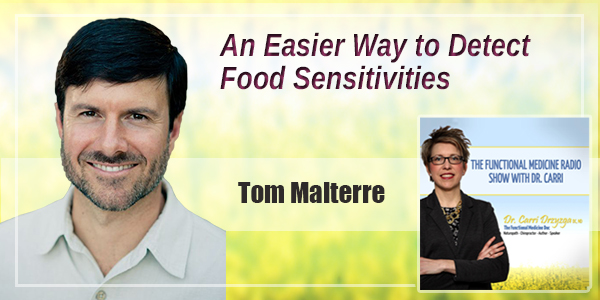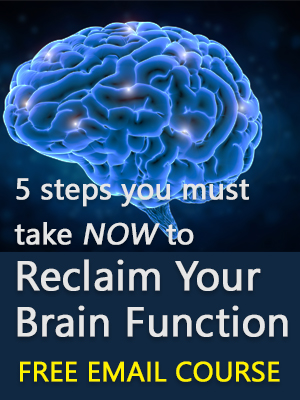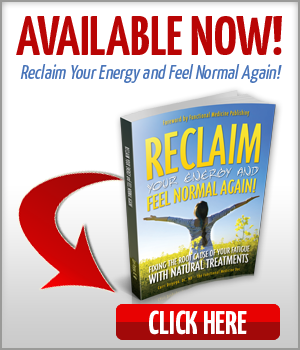Podcast: Play in new window | Download
Subscribe: Apple Podcasts | Android | RSS
In this episode of The Functional Medicine Radio Show, Dr. Carri’s special guest Tom Malterre explains how you can figure out which foods you should avoid in order to have more energy and feel great.
Tom has a Master’s in Nutrition and is a Certified Functional Medicine Practitioner. Tom and his wife Ali published the gluten-free Whole Life Nutrition cookbook over 8 years ago and have been experts in food sensitivities for over 10 years. Their newest book is The Elimination Diet – Discover the Foods That Are Making You Sick and Tired and Feel Better Fast.
Main Questions Asked:
- What is an elimination diet? What’s the process like?
- Do we have to avoid our foods sensitivities forever?
- What is your thought on rotation diets? Do you think that they have any kind of validity?
Key Points made by Tom:
- When people have food reactions, it’s probably the thorn in their side that’s keeping them from feeling better whether it’s skin conditions, mood issues, astrointestinal problems.
- We used to run tests, some of the results were fabulous but some of them were incredibly far off from where our person was. A test would come back negative that they didn’t have a response to corn or soy or wheat, yet every time they ate those foods, they got a rash on the right side of their face, they got terrible fatigue, or they got horrendous diarrhea.
- Whatever the case was, the lab wasn’t necessarily dictating what was actually happening with that particular person and they were frustrated.
- There’s one lab that never lies and that’s your body.
- If you’re eating a particular food and you’re having a particular symptom over and over again, I don’t care what your doctor, lab, or anyone in the world says. Your body is telling you something. It’s saying that when you consume that particular food, you’re having something happen to you that you don’t enjoy, so let’s take that food out for a while. Then people get so much better!
- If it’s migraines, it happens within 3 to 5 days. With skin conditions, it may take a couple of weeks. If it’s chronic fatigue, fibromyalgia or some autoimmune condition like Hashimoto’s, it varies. I’ve seen it take 9 days or 2 months. It depends on the person and what’s going on with them and what else is happening. Are they under stress? Do they have terrible digestive issues? Do they need help with enzymes?
- The reality is the vast majority of people get better and they get better fast.
- So many people are taking nonsteroid anti-inflammatories (NSAIDs) for various pains. The FDA has literature saying there is a solid warning on all NSAIDs stating that on the day you start taking it, you have an increased risk for cerebrovascular, cardiovascular disease. Meaning you might have an increase for stroke or a heart attack.
- So many people are in pain. One of the top 10 reasons why people see a physician is for back pain. They’re coming in and saying that their pain is caused by me not having enough medication. No! Your pain is coming from something irritating your immune system. You have your immune system secreting chemicals that elicit a pain response. If you can calm the inflammation down, you can get rid of your pain.
- There’s literature on Vitamin D and pain. I see that when people have food sensitivity reactions, they’re often deficient in Vitamin D. They’re not absorbing a lot of the D that they’re taking via supplements and in the diet. They’re having some chemical issues that are degrading the D.
- Here’s a case study: I had a middle aged woman who’s a school teacher. She was just the bee’s knees, a lovely human being. She gave every ounce of her being to the children that she taught. Yet she was totally fatigued and had all these joint problems. All we did was put her on a gluten elimination diet and she said she felt 20 years younger!
- The reality is, it comes back to the most simple thing that Hippocrates told us forever. In 790 A.D., he started saying “Let thy food be thy medicine and thy medicine be thy food”!
- A lot of people are terrified and overwhelmed at the elimination diet. They’re afraid to give up pasta, bread, and cheese. They think there will be nothing to eat but there is life after that.
- We have now over 3,000 commonly used recipes. You don’t have any deficit whatsoever. There are no issues with lacking recipes. Some of the comments we get from people are that they had no idea that vegetables could taste so good. They had no idea they could feel like this when they woke up in the morning. They thought they had to have coffee every day.
- Perlmutter taught us this at The Institute for Functional Medicine. People are down on what they are not up on. So if you’re not familiar what life is like without gluten or dairy which are the two most irritant foods for a lot of people, then you immediately push it away until you get enough inspiration or input. Ten to thirteen recipes is all it takes for someone to shift their entire life.
- I hear people kicking themselves all the time saying that they wish they would’ve done it sooner. They had no idea that food was such powerful medicine. It wasn’t just their skin issue that went away but it was their cholesterol that normalized, their cardiovascular disease markers that lessened to a point of them now being off of their high blood pressure medication, being off of their statin medication. They’re happy every day. They no longer need their antidepressants. There are so many different things that people say.
- The elimination diet is the process of removing particular foods. We look at the scientific literature, case studies and determine which foods cause the most responses in the most people and we take out those foods for a period of time. I take out a large amount of foods in the beginning and I start adding them back at two weeks but they’re the less reactive foods and then we start adding back the heavier stuff after we’ve taken it out for a while.
- Here’s the premise: If you’re eating a food now, and your immune system is confused, and is launching an attack every time you’re eating that food, you’re experiencing the inflammation response after every single meal. Our goal is to stop that.
- The “normal” for most people is pretty bad. What people get accustomed to is crazy! The neat thing is there’s a level after that. Once you reach that level, there’s a level after that.
- You should be waking up, your eyes popping open and you go “What’s up for today? Let’s hit this! Let’s go!” You get out of bed, eat, and you should still feel energy. You go about your day and you’ll have energy that’s consistent. There doesn’t need to be a slump at 3:00. There doesn’t need to be this total exhaustion by dinner time.
- People don’t know that you don’t have to have gas after every meal. They don’t know that if you’re loosening your belt due to bloating that that’s an imbalance. They don’t know that excessive belching or flatulence. Or they think it’s okay to have two bowel movements a week or it’s alright to have 4 to 6 bowel movements per day. That’s not it. There’s another level.
- We start to piece the foods back in one by one. You’ll start to pay close attention to what happens. We ask you to listen to what happens in your body after you eat food. Some people will notice that a fog comes over their head. They eat a certain food and they’re not so happy, they’re tired, they feel like they’re walking through molasses. Or with some their skin flares up.
- When you notice these physical responses to foods, take it out and leave it out for a while. And watch out because all of a sudden, your body starts healing itself. That’s when your energy level goes up. That’s when your skin gets really supple and smooth. That’s when your gastrointestinal tract calms down and you realize that you don’t have to have the gas, nausea, bloating, diarrhea or constipation.
- Leave those foods out for 3 three months. In the book, I talk about different food and supplements that actually help heal the body. Then once the body is healed, you can challenge that food back in. Sometimes you still respond and sometimes you don’t.
- What I find is usually in the beginning, people react to a ton of stuff and when they challenge back in, they don’t respond to some of those things later on. It’s just a matter of calming the system down so it can heal itself and then the body no longer responds to certain foods.
- In that time and space, you are no longer sensitive to that food. It doesn’t mean you’re not always going to be sensitive to it. There are certain foods that can be problematic as Tom O’Bryan would say. He would say that the vast majority of people shouldn’t add gluten back in. There are a lot of undiagnosed Celiac or gluten sensitive people so it’s just best to leave the gluten out. Most people do better without gluten.
- When it comes to things like eggs, soy, or corn, some people can add those things back in just fine and not have a response. I would say that gluten and dairy are the ones that people do better with leaving out for a long time. Gluten – maybe their whole life.
- Once you feel the difference, that doesn’t sound like a death sentence. That sounds like a prescription for freedom.
- You’re not going to have to leave a food out for the rest of your life. The vast majority of foods a lot of people will tolerate. Here’s the reality, that’s coming from a limited space of knowledge. You’re worried about taking a food out but when you take a food out and you feel fabulous, then the choice is always yours.
- If you add that food back in and your only symptom is mild fatigue, some people would rather have the mild fatigue and still eat their chocolate. But then I say to look at the data on autoimmune diseases. It starts in the gut. When someone has a leaky gut, they leave themselves more susceptible to other diseases later on whether it’s Parkinson’s disease or Hashimoto’s thyroiditis. Whatever it is, you’ve got to calm the gut down to avoid all disease.
- You can risk that or leave that food out. It’s up to you. And some people don’t react at all. In that case, eat it up, you’re fine.
- I have not seen rotation diets work. You usually need a lot longer than the 3 to 10 days of rotation before the immune system calms down.
- From that position, you are now in a position of power. You know what foods are causing you pain and suffering and which ones aren’t. Not everyone does well with all foods. If you look at animals, if you feed an animal grapes or chocolate, it could kill them depending on what kind of animal it is.
- Certain animals, because of their genetics and their type, they don’t respond well to certain chemicals in foods. Humans can be that way. It can be based on how much stress and inflammation we have. There are so many different times in life when you might have changed how your body responds to foods. I’ve seen this after trauma like childbirth, the death of a spouse, auto accidents, chemical injuries. People respond to foods almost overnight.
- There are going to be times in your life when you feel like all of a sudden, you don’t feel good and you don’t know what it is. It may be your food. Just do this elimination diet and you can figure it out.
- Over the last decade, we’ve found that this is the most powerful intervention people can do. There’s nothing I’ve seen, no supplement that compares, there’s no specific dietary protocol that I’ve seen that compares. This is the first step for functional medicine health.
Resources Mentioned:
Book – Reclaim Your Energy and Feel Normal Again
Thank you for listening! If you enjoyed this podcast, please subscribe and leave a 5-star rating and review on iTunes!








